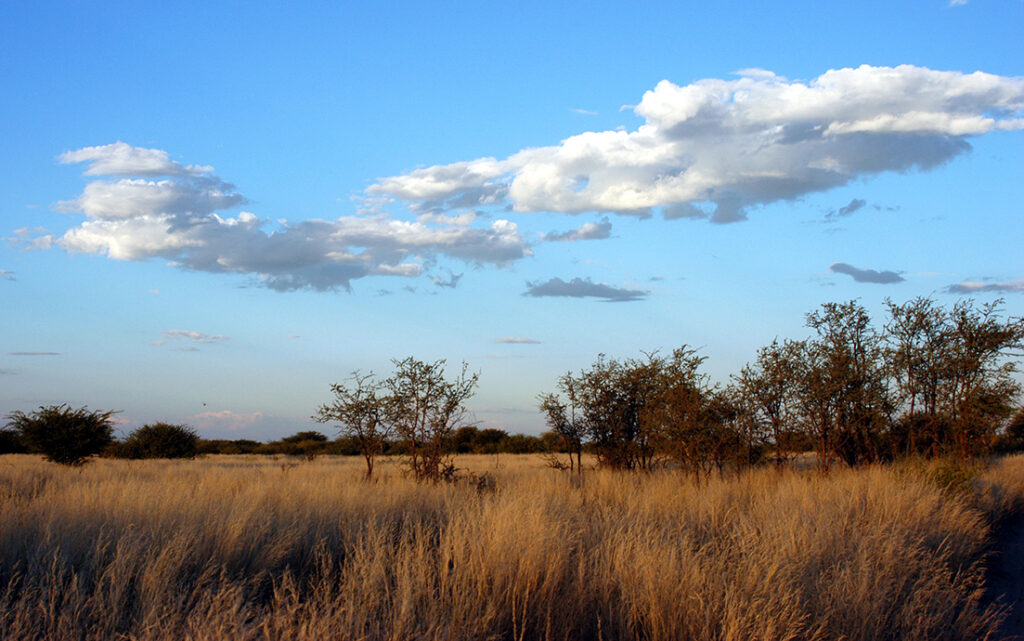What is a habitat?

The habitat of an animal or plant species is defined by the specific biotic (e.g. vegetation, prey occurrence) and abiotic (e.g. weather, soil composition) factors they require for survival. The physiology and behavioural adaptations of a particular species often determine the habitats in which they survive and thrive.
The interactions of animals with their habitat are complex. For example, resources like food, are distributed in time and space.
Kalahari & Khutse Game Reserve
Waterholes
In the dry climate of the Kalahari semi-desert, the number of animals living there is limited by the lack of water. Waterholes (both natural and artificial) are therefore special attractions in this barren landscape.
In order to understand this unique ecosystem, we are investigating how and when different animal species use this important resource. In this way we collect data on the behaviour of leopards and lions and their prey at the waterholes. For this purpose we use direct observations on the spot as well as indirect methods such as camera traps or GPS collars. The combined results from these data will provide us with valuable insights into the use of the waterholes.
Effective Nature Conservation
Resources for nature conservation such as money, space and manpower are limited. It is therefore all the more important to use them wisely and to pursue effective nature conservation. To do this, it is essential to know how different animal species use the resources available to them, such as forage or habitat types.
Using the data we receive from animals with GPS transmitters, we can identify places where our leopards or lions may have preyed. We then travel to these places and can determine where each prey animal was taken. Later, by analysing the collected data, we can determine preferences for prey and hunting locations. Finally, we can use the data to make recommendations on which areas need special protection to ensure the survival of the animals in the future.

